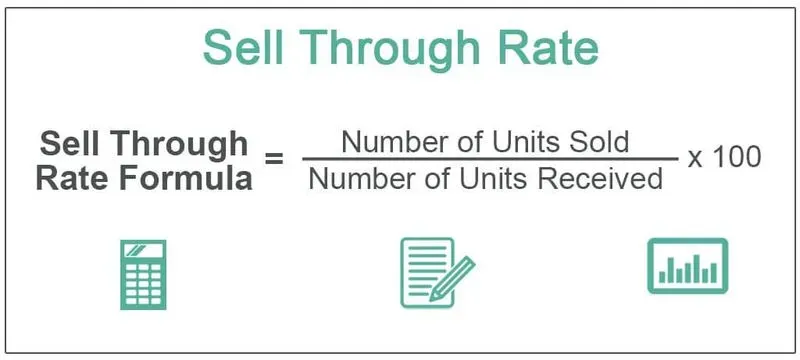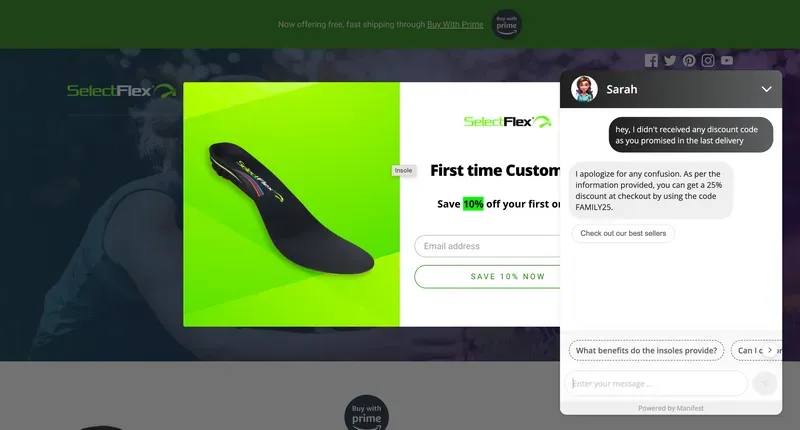Unlock Profits with High Sell-Through Strategies!
By Sonaksh Singh Rawat on

Unlock Sky-High Sales: The Secret Formula to Boosting Your Retail Sell-Through Rate Revealed!
Sell Through Rate: Essential Tactics for Retail Success
Before we talk about high sell through meaning, you ought to know that mastering the art of forecasting and steering product demand is crucial for online stores of any size. As it can significantly impact their success.
The sell-through rate is a key metric in this context, providing essential information on an online store’s ability to convert its inventory into actual sales. Having a strong sell-through rate indicates that an online store is capable of swiftly moving merchandise and effectively generating income.
What is a sell through rate?
The Sell Through Rate is recognized as an essential metric for gauging retail success, showing how efficiently inventory is being transformed into sales within a specific period. This is determined by dividing the total number of items sold by the initial inventory at the start of the period and then converting this figure into a percentage by multiplying by 100. This process provides retailers with a detailed insight into how quickly their products are being sold.
For example, if a store begins the month with an inventory of 100 products and sells 60 of them, the Sell Through Rate would be (60/100) × 100 = 60%.
A high Sell Through Rate indicates that products are selling quickly, which could suggest a strong demand or effective sales strategies. Conversely, a lower Sell Through Rate might indicate excessive stock, declining interest in the products, or issues with pricing strategies.
Monitoring this key metric allows online store owners to make strategic decisions on inventory management to enhance sales and minimize the volume of unsold products.
What is a good sell-through rate?
The ideal Sell Through Rate can vary depending on several factors, such as the specific industry, the type of products being sold, and the current market conditions. Generally, a higher Sell Through Rate is considered beneficial, indicating strong sales relative to the inventory on hand.
Sell Through Rates between 70% to 80% are often associated with a thriving business, suggesting that a significant portion of the stock sells within a set period, achieving a good equilibrium between supply and consumer interest.
However, the optimal rate may differ across different sectors. For products that tend to sell quickly or are seasonal, a Sell Through Rate close to 100% might be the goal, showing fast-moving sales.
On the other hand, luxury goods or niche markets may aim for a lower rate, reflecting their unique selling strategies and target audiences. The best Sell Through Rate aligns with a business’s strategic goals, adapts to market changes, and satisfies customer needs. It’s crucial to find the right balance between effective inventory turnover and profit generation through sales.
How to calculate sell through rate?

Calculating the sell-through rate is a straightforward process. One simply needs to take the quantity of items sold over a specific period and divide that by the total number of products to begin with. This result is then multiplied by 100 to convert it into a percentage, thus providing the sell-through rate formula.
This metric serves as an indicator of success in marketplace activities, offering insights for potential business improvement.
For instance, if one starts with an inventory of 200 items and sells 150, the Sell Through Rate would be calculated by dividing 150 by 200, and then multiplying the result by 100. This calculation results in a 75% sell-through rate.
How to increase sell-through rate in ecommerce business?
Boosting the Sell Through Rate for an e-commerce venture involves a variety of tactics aimed at enhancing product attractiveness, streamlining inventory management, and amplifying customer interaction. Here are some essential strategies to consider:
- Fine-tune Your Pricing Approach: Regularly reassessing and adjusting prices to align with the market is crucial. Utilizing dynamic pricing software can aid in allowing prices to fluctuate based on market demand and competition.
- Elevate Your Product: Achieving an optimal sell-through rate requires the use of high-quality visuals, detailed descriptions, and positive reviews from customers. This greatly helps in enhancing the appeal of the products. Ensuring product presentations are thorough, precise, and captivating is essential.
- Embrace Precision in Marketing: Utilizing data analytics to gain a clear understanding of the customer base and their preferences is key. Tailoring marketing strategies, such as engaging email campaigns and captivating social media ads, can resonate perfectly with the target audience.
- Spice Things Up With Deals and Discounts: Launching time-sensitive promotions, offering enticing discounts, or presenting irresistible bundled deals can significantly heighten interest and encourage quicker purchasing decisions.
- Enhance Website Usability: Developing a website that is easy to navigate, with fast load times and a smooth checkout process, improves the shopping experience and can potentially increase purchase rates.
- Harness the Power of Social Evidence: Presenting testimonials, ratings, and user-generated content helps build trust, influencing buying decisions, and enhancing the brand’s sell-through rate.
- Efficient Inventory Management: Regularly examining sales figures to identify underperforming products and adjusting stock levels accordingly is important. For overstocked products, organizing clearance sales can help free up storage space and liquidate excess inventory.
- Prioritize Stellar Customer Care: Offering top-notch customer support, characterized by rapid responses and a straightforward returns process, enhances customer satisfaction and trust, encouraging repeat business.
- Implement Cross-Selling and Up-Selling Strategies: Encouraging customers to consider free products with certain purchases or more premium options can effectively increase the overall value of their purchases.
- Keep an Eye on the Market: Staying aware of the latest trends and shifts in consumer preferences is crucial. Refreshing products to ensure they align with current customer interests is essential.
How AI can help you in increasing sell through rate?

Artificial Intelligence (AI) is poised to transform how businesses enhance their Sell Through Rate. Here is an overview of the benefits AI brings:
- Forecasting the Future: AI scrutinizes sales data and market trends, providing accurate forecasts for product demand. This allows companies to optimize their inventory, stocking up just the right amount of products and reducing surplus or shortages.
- Tailored Suggestions: AI’s monitoring of individual customer preferences and purchase history leads to personalized product recommendations, significantly boosting the likelihood of sales and improving Sell Through Rates.
- Smart Pricing Solutions: By implementing AI, companies can adapt their pricing strategies dynamically, taking into account demand fluctuations, competitive pricing, and other critical factors.
- Enhanced Inventory Control with AI: Artificial intelligence offers insights into which products are performing well and which aren’t. Armed with this knowledge, businesses can make smarter inventory decisions, ensuring high-demand items are readily available, thereby boosting the Sell Through Rate.
- Improved Customer Journey: The use of AI in customer service, especially in chatbots and support tools, revolutionizes customer interactions. It offers timely assistance, resolves issues efficiently, and enhances the overall shopping experience, leading to higher customer satisfaction and loyalty.
Conclusion
Conclusively, honing the skill of Sell Through Rate is essential for the prosperity of retail ventures.
Through a strategic approach, including price adjustments, improving product presentations, deploying effective marketing strategies, and optimizing inventory management, online store owners can significantly increase the speed at which their products are sold. Implementing these techniques is beneficial not only for improving the Sell Through Rate but also for the comprehensive growth of an online store.
Markdown 8914 bytes 1240 words 81 lines Ln 12, Col 0
HTML




